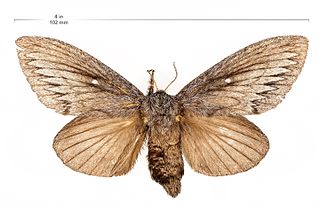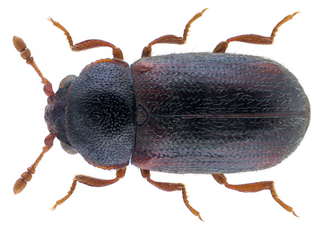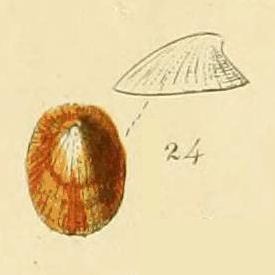
Loons or divers are a group of aquatic birds found in much of North America and northern Eurasia. All living species of loons are members of the genus Gavia, family Gaviidae and order Gaviiformes.

In taxonomy, a nomen nudum is a designation which looks exactly like a scientific name of an organism, and may have originally been intended to be one, but it has not been published with an adequate description. This makes it a "bare" or "naked" name, which cannot be accepted as it stands. A largely equivalent but much less frequently used term is nomen tantum. Sometimes, "nomina nuda" is erroneously considered a synonym for the term "unavailable names". However, not all unavailable names are nomina nuda.
In binomial nomenclature, a nomen dubium is a scientific name that is of unknown or doubtful application.

A conserved name or nomen conservandum is a scientific name that has specific nomenclatural protection. That is, the name is retained, even though it violates one or more rules which would otherwise prevent it from being legitimate. Nomen conservandum is a Latin term, meaning "a name to be conserved". The terms are often used interchangeably, such as by the International Code of Nomenclature for Algae, Fungi, and Plants (ICN), while the International Code of Zoological Nomenclature favours the term "conserved name".

The river cooter is a species of freshwater turtle in the family Emydidae. The species is native to the central and eastern United States, but has been introduced into parts of California, Washington, and British Columbia.

The nabarlek is a small species of macropod found in northern Australia. They are a shy and nocturnal animal that resides in rocky hollows and forages in the surrounding area. Their diet is grasses, sedges, and ferns found in and around their scrub covered refuges. They are distinguished by a reddish tinge to the mostly grey fur and a distinct stripe at the cheek. They move with great speed and agility when observed, with a forward leaning posture and a bushy tail that arches over the back.
Banksia concinna is a species of shrub that is endemic to Western Australia. It has elliptical leaves with between five and twenty triangular teeth on each side, hairy heads of yellow flowers and hairy, egg-shaped fruit.

Siphonaria is a genus of air-breathing sea snails or false limpets, marine pulmonate gastropod molluscs in the family Siphonariidae, the false limpets.

The eastern river cooter is a subspecies of turtle native to the eastern United States, with a smaller population in the midwest. It is found in freshwater habitats such as rivers, lakes, and ponds.

Scissurella is a genus of minute sea snails, marine gastropod molluscs in the family Scissurellidae, the small slit snails.
Eutachyptera is a monotypic moth genus in the family Lasiocampidae. The genus was erected by William Barnes and James Halliday McDunnough in 1912. Its single species, Eutachyptera psidii, was first described by Sallé in 1857. It is found in Mexico.

Gloveria is a genus of moths in the family Lasiocampidae. The genus was erected by Packard in 1872. All the species in the genus are from southern North America.

Nomen illegitimum is a technical term used mainly in botany. It is usually abbreviated as nom. illeg. Although the International Code of Nomenclature for algae, fungi, and plants uses Latin terms as qualifiers for taxon names, the definition of each term is in English rather than Latin. The Latin abbreviations are widely used by botanists and mycologists.

Sphindidae is a family of beetles, in the suborder Polyphaga. They are called slime mold beetles due to their exclusive feeding on slime molds during adult and larval stages, other aspects of their life history are obscure. Palaeontological discoveries since 2015 have added to the geologic history of Sphindidae, including the discovery of Libanopsis, placed in the extinct subfamily Libanopsinae.

Iothia is a genus of sea snails, the true limpets, marine gastropod mollusks in the family Lepetidae.

Stomatella is a genus of small to medium-sized sea snails, marine gastropod mollusks in the family Trochidae, the top snails and their allies.
Gloveria howardi is a moth in the family Lasiocampidae.

Gloveria arizonensis is a species of moth in the family Lasiocampidae. It is native to California, Texas, Colorado & Utah.
Gloveria gargamelle is a species of lasiocampid moth.












